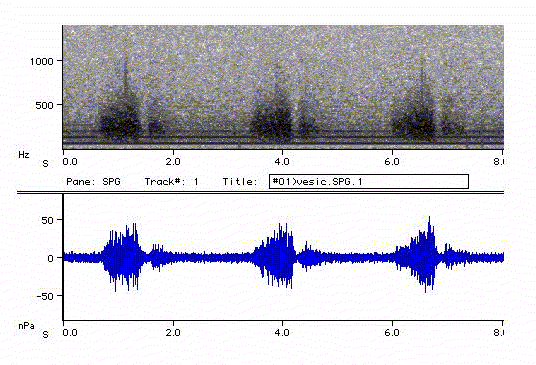Steve S. Kraman - sskram01@pop.uky.edu
VA Medical Ctr.
2250 Leestown Rd.
Lexington, KY 40511
Popular version of paper 2aEA4
Presented Tuesday morning, December 3, 1996
Third ASA/ASJ Joint Meeting, Honolulu, Hawaii
Embargoed until December 3, 1996
Physicians have listened to lung sounds as a routine part of the physical examination at least as far back as the time of Hippocrates, about 400 BC. During most of that time, it was done by directly applying the ear to the patient's chest. In 1819, a French physician, Rene Laennec, invented the stethoscope and published a textbook in which he described the sounds made by the lungs and their association with different illnesses. Physicians have universally used his technique and descriptive terms since then.
During the past 30 years, researchers have tried to better understand lung sounds and their significance, and to make them more useful to the clinician. There has been relatively little research, however, on the most common lung sound: the normal or vesicular lung sound. This is the sound that anyone can hear when listening to a person's chest with a stethoscope. It is a soft blowing sound that grows louder as the subject breathes more forcefully. It also tends to be louder over the lower back and upper front of the chest and when breathing in than when breathing out. In certain lung diseases, such as emphysema, the normal lung sound grows faint or may disappear entirely.
 Figure. Normal lung sounds (inspiration and expiration) recorded from the posterior right lower chest of a healthy
man The upper graph shows the frequency spectra of the sounds.
Figure. Normal lung sounds (inspiration and expiration) recorded from the posterior right lower chest of a healthy
man The upper graph shows the frequency spectra of the sounds.
Many people believe that the normal lung sound is simply made by air flowing turbulently through the bronchial tubes, making noise that is filtered by the lung tissue between the tubes and the surface of the chest. Some have theorized that the normal lung sound is generated at the vocal cords and transmitted to the chest wall. While seeming intuitively reasonable, several studies have shown normal lung sounds to behave in peculiar ways that are not consistent with the above assumptions. Studies have shown that virtually none of the lung sound comes from the vocal cords or even the trachea. Neither does it come from the very small bronchial tubes (smaller than 2 mm in diameter) that lie far out in the lungs.
Rather, the sound appears to be generated within the larger airways within each lung. But how is it generated? Turbulent airflow is well understood to depend on several factors including the diameter of the tube, the speed of the flow and the density of the gas. If one measured the turbulence-generated noise and changed the density of the gas flowing within the tube, you would expect a predictable change in the intensity of the sound. This is what happens when sounds are measured from the neck, just over the trachea while breathing a mixture of Helium and Oxygen, which is 35% less dense than air. The sound decreases in amplitude by almost 50%. But during this same experiment, the sound amplitude decreases by only about 14% over lung tissue at the lower part of the chest and this change is scarcely apparent to the ear. It therefore seems that turbulence plays less of a role in the creation of the normal lung sound. It is important to determine what this role is.
Why does it matter? Because the information traditionally obtained from listening to the lungs has been based on large, easily heard changes in the sounds. Modern acoustic analysis equipment and computers are capable of measuring sound intensity and frequency much more precisely than can the human ear. If there is useful information in the normal lung sound that we are not now using, it may be within our reach. The difficulty is that we cannot make reasonable inferences about the function of the lungs from subtle changes in lung sounds if we don't know how the sounds are made.
This question must be answered before it will be possible to extract more information from the sounds made by the lungs in health and disease.
For more sounds and spectra and links to other lung sound specific sites, visit http://www.umanitoba.ca/faculties/medicine/pediatrics_and_child_health/ILSA/